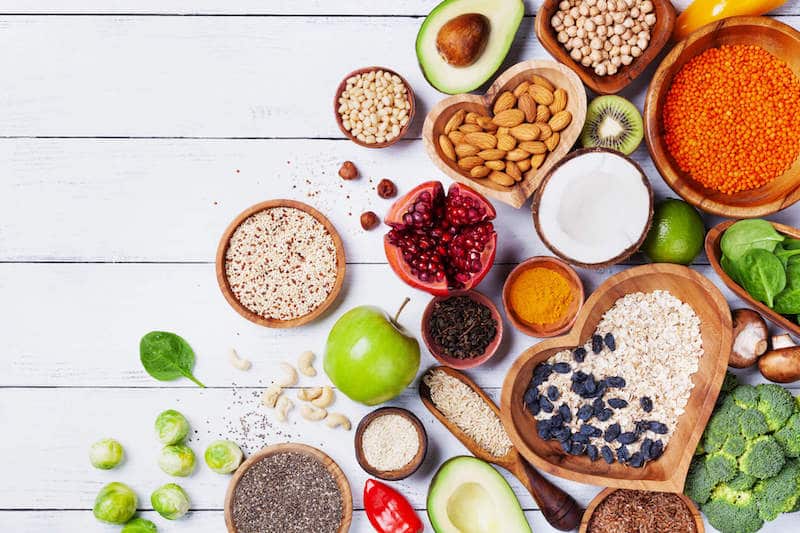Lejeboca
Member
- Joined
- Jun 19, 2017
- Messages
- 1,039
Dehydrated Foods: Are they Microbiologically Safe?
"The terms drying and dehydration are not identical. The US Department of Agriculture lists dehydrated foods as those with less than 2.5% moisture (dry basis) whereas dried foods applies to dried foods with more than 2.5% moisture (dry basis) up to 20% moisture content depending upon the composition of foods (Vega-Mercado et al., 2001). Although these terms have different meanings, they are often used interchangeably (Saravacos and Kostaropoulos, 2002)."
"In terms of microbial inactivation, dry heat is less effective than moist heat because the cell proteins, which are an important component in maintaining cell viability, are more stable in dry state (Phungamngoen et al. 2011a, 2011b, 2013; Smelt and Brul 2014). The bacterial inactivation caused by heat and dehydration was found to be less effective than that caused by shear and oxygen stress (Ghandi et al., 2012). Similarly, the presence of antioxidant such as ascorbic acid in the food was found to affect the thermal stability of bacteria (Ghandi et al., 2013). Therefore, a more stringent heat treatment is required to destroy microorganisms during drying (Hawaree et al., 2009), depending upon the composition of food and the processes involved."
"It is commonly accepted that dried foods retard or prevent the growth of microorganisms but when a sufficient number of pathogenic microorganisms are present after the drying, this may pose a threat to the consumer. In dried condition, microbial growth is inhibited, but spores and also the vegetative cells can remain viable for months (Beuchat et al., 2013). Moreover, when dried materials are used to prepare foods with a high final water activity, the growth of surviving organisms may be promoted. This can lead to a quicker spoilage and/or a higher risk of consumer infection."
"The open drying environment, low air velocity, longer time at higher moisture content, ambient temperature and unhygienic handling are conducive to microbial growth resulting into higher risk of food borne illness in an open sun dried fish products (Nagwekar et al., 2017; Haque et al., 2013; Guizani et al., 2008)."
- The microbiological quality of various foods dried by applying different drying methods: a review
"In dry foods, some pathogens, yeast and molds can continue to grow during storage"
"Generally, microflora in vegetables is associated with Gram-negative bacteria while the fruit flora generally consists of yeasts and molds [11]."
"There are some studies of inactivation of microorganisms by dipping or soaking a product in ascorbic acid [21, 22], citric acid [22, 23], lactic acid [24], and acetic acid [25, 26]. These solutions can help reduce the number of normal flora and pathogenic microorganisms and also reduce the enzyme activity that causes browning [27]. Additionally, alkaline solution (NaOH, Na2CO3, K2CO3) applied by dipping or spraying, salting, and immersion in NaCl solution used in drying of fruits and vegetables are of great importance [28–30]. These can be applied alone or in combination with other methods, for example, the application of citric acid + salt in drying tomatoes [31]. Blanching is one of the most widely used methods of inactivation of microorganisms. It can be performed in different ways such as dipping in hot water, hot or boiling solutions containing acids and/or salts, or steam for a few minutes [32]. Some gases such as ozone and chlorine dioxide are used in dried products to prevent microbial growth [33, 34]."
"The growth of microorganisms in foods is largely prevented/delayed by drying. However, since dry foods have hygroscopicity and the moisture content is not constant, the relative humidity of the air in the storage is important. When the relative humidity and moisture content balance is disturbed, a suitable moisture environment is created especially for mold growth."
"The terms drying and dehydration are not identical. The US Department of Agriculture lists dehydrated foods as those with less than 2.5% moisture (dry basis) whereas dried foods applies to dried foods with more than 2.5% moisture (dry basis) up to 20% moisture content depending upon the composition of foods (Vega-Mercado et al., 2001). Although these terms have different meanings, they are often used interchangeably (Saravacos and Kostaropoulos, 2002)."
"In terms of microbial inactivation, dry heat is less effective than moist heat because the cell proteins, which are an important component in maintaining cell viability, are more stable in dry state (Phungamngoen et al. 2011a, 2011b, 2013; Smelt and Brul 2014). The bacterial inactivation caused by heat and dehydration was found to be less effective than that caused by shear and oxygen stress (Ghandi et al., 2012). Similarly, the presence of antioxidant such as ascorbic acid in the food was found to affect the thermal stability of bacteria (Ghandi et al., 2013). Therefore, a more stringent heat treatment is required to destroy microorganisms during drying (Hawaree et al., 2009), depending upon the composition of food and the processes involved."
"It is commonly accepted that dried foods retard or prevent the growth of microorganisms but when a sufficient number of pathogenic microorganisms are present after the drying, this may pose a threat to the consumer. In dried condition, microbial growth is inhibited, but spores and also the vegetative cells can remain viable for months (Beuchat et al., 2013). Moreover, when dried materials are used to prepare foods with a high final water activity, the growth of surviving organisms may be promoted. This can lead to a quicker spoilage and/or a higher risk of consumer infection."
"The open drying environment, low air velocity, longer time at higher moisture content, ambient temperature and unhygienic handling are conducive to microbial growth resulting into higher risk of food borne illness in an open sun dried fish products (Nagwekar et al., 2017; Haque et al., 2013; Guizani et al., 2008)."
- The microbiological quality of various foods dried by applying different drying methods: a review
"In dry foods, some pathogens, yeast and molds can continue to grow during storage"
"Generally, microflora in vegetables is associated with Gram-negative bacteria while the fruit flora generally consists of yeasts and molds [11]."
"There are some studies of inactivation of microorganisms by dipping or soaking a product in ascorbic acid [21, 22], citric acid [22, 23], lactic acid [24], and acetic acid [25, 26]. These solutions can help reduce the number of normal flora and pathogenic microorganisms and also reduce the enzyme activity that causes browning [27]. Additionally, alkaline solution (NaOH, Na2CO3, K2CO3) applied by dipping or spraying, salting, and immersion in NaCl solution used in drying of fruits and vegetables are of great importance [28–30]. These can be applied alone or in combination with other methods, for example, the application of citric acid + salt in drying tomatoes [31]. Blanching is one of the most widely used methods of inactivation of microorganisms. It can be performed in different ways such as dipping in hot water, hot or boiling solutions containing acids and/or salts, or steam for a few minutes [32]. Some gases such as ozone and chlorine dioxide are used in dried products to prevent microbial growth [33, 34]."
"The growth of microorganisms in foods is largely prevented/delayed by drying. However, since dry foods have hygroscopicity and the moisture content is not constant, the relative humidity of the air in the storage is important. When the relative humidity and moisture content balance is disturbed, a suitable moisture environment is created especially for mold growth."


